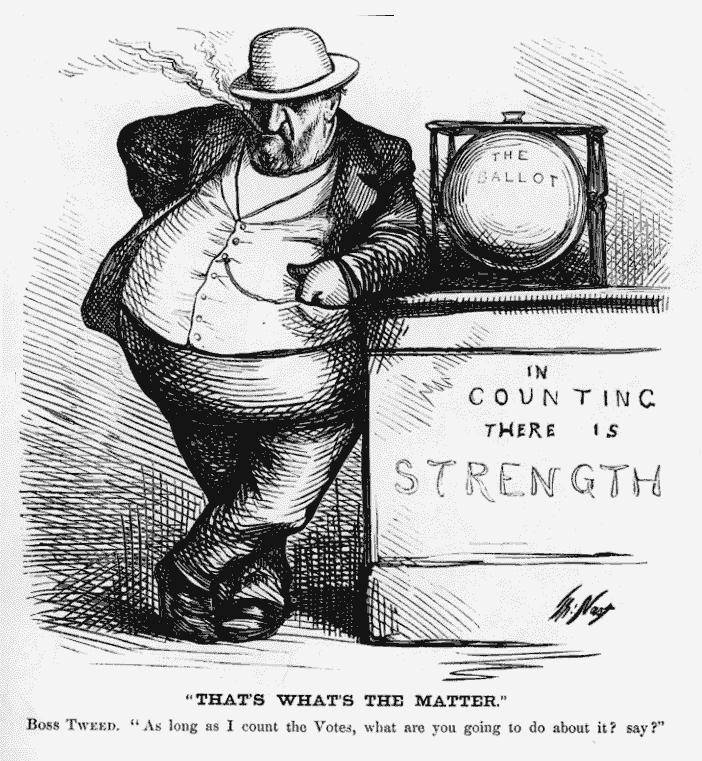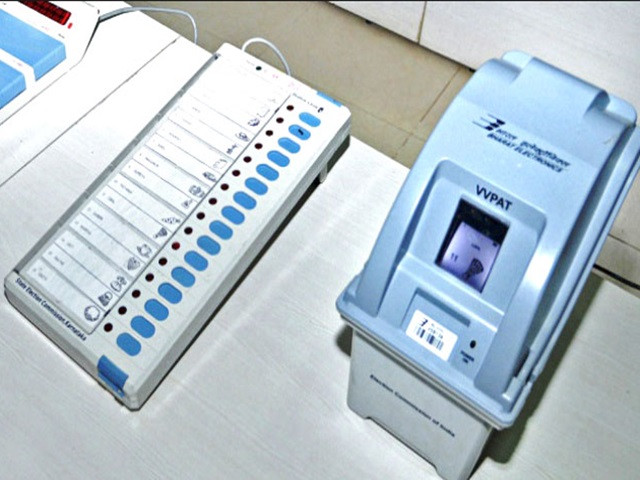|
Electronic Voting Machine
An electronic voting machine is a voting machine based on electronics. Two main technologies exist: '' optical scanning'' and '' direct recording'' (DRE). Optical scanning In an optical scan voting system, or marksense, each voter's choices are marked on one or more pieces of paper, which then go through a scanner. The scanner creates an electronic image of each ballot, interprets it, creates a tally for each candidate, and usually stores the image for later review. The voter may mark the paper directly, usually in a specific location for each candidate. Or the voter may select choices on an electronic screen, which then prints the chosen names, and a bar code or QR code summarizing all choices, on a sheet of paper to put in the scanner. Hundreds of errors in optical scan systems have been found, from feeding ballots upside down, multiple ballots pulled through at once in central counts, paper jams, broken, blocked or overheated sensors which misinterpret some or many ball ... [...More Info...] [...Related Items...] OR: [Wikipedia] [Google] [Baidu] |
Voting Machine
A voting machine is a machine used to record votes in an election without paper. The first voting machines were mechanical but it is increasingly more common to use ''electronic voting machines''. Traditionally, a voting machine has been defined by its mechanism, and whether the system tallies votes at each voting location, or centrally. Voting machines should not be confused with tabulating machines, which count votes done by paper ballot. Voting machines differ in usability, security, cost, speed, accuracy, and ability of the public to oversee elections. Machines may be more or less accessible to voters with different disabilities. Tallies are simplest in parliamentary systems where just one choice is on the ballot, and these are often tallied manually. In other political systems where many choices are on the same ballot, tallies are often done by machines to give faster results. Historical machines In ancient Athens (5th and 4th centuries BCE) voting was done by different ... [...More Info...] [...Related Items...] OR: [Wikipedia] [Google] [Baidu] |
Electronics
The field of electronics is a branch of physics and electrical engineering that deals with the emission, behaviour and effects of electrons using electronic devices. Electronics uses active devices to control electron flow by amplification and rectification, which distinguishes it from classical electrical engineering, which only uses passive effects such as resistance, capacitance and inductance to control electric current flow. Electronics has hugely influenced the development of modern society. The central driving force behind the entire electronics industry is the semiconductor industry sector, which has annual sales of over $481 billion as of 2018. The largest industry sector is e-commerce, which generated over $29 trillion in 2017. History and development Electronics has hugely influenced the development of modern society. The identification of the electron in 1897, along with the subsequent invention of the vacuum tube which could amplify and rectify small ... [...More Info...] [...Related Items...] OR: [Wikipedia] [Google] [Baidu] |
Optical Scan Voting System
An optical scan voting system is an electronic voting system and uses an optical scanner to read marked paper ballots and tally the results. History Marksense systems While mark sense technology dates back to the 1930s and optical mark recognition dates to the 1950s, these technologies were first explored in the context of standardized tests such as college entrance exams. The first suggestion to use mark sense technology to count ballots came in 1953, but practical optical scanners did not emerge until the 1960s. The Norden Electronic Vote Tallying System was the first to be deployed, but it required the use of special ink to mark the ballot. The Votronic, from 1965, was the first optical mark vote tabulator able to sense marks made with a graphite pencil. The oldest optical-scan voting systems scan ballots using optical mark recognition scanners. Voters mark their choice in a voting response location, usually filling a rectangle, circle or oval, or by completing an arrow ... [...More Info...] [...Related Items...] OR: [Wikipedia] [Google] [Baidu] |
Direct-recording Electronic Voting Machine
A DRE voting machine, or direct-recording electronic voting machine, records votes by means of a ballot display provided with mechanical or electro-optical components that can be activated by the voter. These are typically buttons or a touchscreen; and they process data using a computer program to record voting data and ballot images in memory components. After the election, it produces a tabulation of the voting data stored in a removable memory component and as printed copy. The system may also provide a means for transmitting individual ballots or vote totals to a central location for consolidating and reporting results from precincts at the central location. The device started to be massively used in 1996 in Brazil where 100% of the elections voting system is carried out using machines. In 2004, 28.9% of the registered voters in the United States used some type of direct recording electronic voting system, up from 7.7% in 1996. History The idea of voting by push button wi ... [...More Info...] [...Related Items...] OR: [Wikipedia] [Google] [Baidu] |
2018 Ballots Being Counted In Santa Clara County
Eighteen or 18 may refer to: * 18 (number), the natural number following 17 and preceding 19 * one of the years 18 BC, AD 18, 1918, 2018 Film, television and entertainment * ''18'' (film), a 1993 Taiwanese experimental film based on the short story ''God's Dice'' * ''Eighteen'' (film), a 2005 Canadian dramatic feature film * 18 (British Board of Film Classification), a film rating in the United Kingdom, also used in Ireland by the Irish Film Classification Office * 18 (''Dragon Ball''), a character in the ''Dragon Ball'' franchise * "Eighteen", a 2006 episode of the animated television series ''12 oz. Mouse'' Music Albums * ''18'' (Moby album), 2002 * ''18'' (Nana Kitade album), 2005 * '' 18...'', 2009 debut album by G.E.M. Songs * "18" (5 Seconds of Summer song), from their 2014 eponymous debut album * "18" (One Direction song), from their 2014 studio album ''Four'' * "18", by Anarbor from their 2013 studio album '' Burnout'' * "I'm Eighteen", by Alice Cooper commonly r ... [...More Info...] [...Related Items...] OR: [Wikipedia] [Google] [Baidu] |
Electronic Voting In The United States
Electronic voting in the United States involves several types of machines: touchscreens for voters to mark choices, scanners to read paper ballots, scanners to verify signatures on envelopes of absentee ballots, and web servers to display tallies to the public. Aside from voting, there are also computer systems to maintain voter registrations and display these electoral rolls to polling place staff. Most election offices handle thousands of ballots, with an average of 17 contests per ballot, so machine-counting can be faster and less expensive than hand-counting. Voluntary guidelines The Election Assistance Commission (EAC) is an independent agency of the United States government which developed the 2005 Voluntary Voting System Guidelines (VVSG). These guidelines address some of the security and accessibility needs of elections. The EAC also accredits three test laboratories which manufacturers hire to review their equipment. Based on reports from these laboratories the EAC ... [...More Info...] [...Related Items...] OR: [Wikipedia] [Google] [Baidu] |
DRE Voting Machine
A DRE voting machine, or direct-recording electronic voting machine, records votes by means of a ballot display provided with mechanical or electro-optical components that can be activated by the voter. These are typically buttons or a touchscreen; and they process data using a computer program to record voting data and ballot images in memory components. After the election, it produces a tabulation of the voting data stored in a removable memory component and as printed copy. The system may also provide a means for transmitting individual ballots or vote totals to a central location for consolidating and reporting results from precincts at the central location. The device started to be massively used in 1996 in Brazil where 100% of the elections voting system is carried out using machines. In 2004, 28.9% of the registered voters in the United States used some type of direct recording electronic voting system, up from 7.7% in 1996. History The idea of voting by push button wi ... [...More Info...] [...Related Items...] OR: [Wikipedia] [Google] [Baidu] |
Election Audit
An election audit is any review conducted after polls close for the purpose of determining whether the votes were counted accurately (a ''results audit'') or whether proper procedures were followed (a ''process audit''), or both. Both results and process audits can be performed between elections for purposes of quality management, but if results audits are to be used to protect the official election results from undetected fraud and error, they must be completed before election results are declared final. ''Election recounts'' are a specific type of audit, with elements of both results and process audits. The need for verification of election results In jurisdictions that tabulate election results exclusively with manual counts from paper ballots, or 'hand counts', officials do not need to rely on a single person to view and count the votes. Insteadvalid hand-counting methodsincorporate redundancy, so that more than one person views and interprets each vote and more than one per ... [...More Info...] [...Related Items...] OR: [Wikipedia] [Google] [Baidu] |
Recount
An election recount is a repeat tabulation of votes cast in an election that is used to determine the correctness of an initial count. Recounts will often take place if the initial vote tally during an election is extremely close. Election recounts will often result in changes in contest tallies. Errors can be found or introduced from human factors, such as transcription errors, or machine errors, such as misreads of paper ballots. Australia Australian elections use instant-runoff voting and single transferable vote at the federal level to determine representatives for the House of Representatives and the Senate respectively. Tabulating votes for both houses involves automatic recounts known as "fresh scrutiny." For the House, this process occurs the Monday after a general election. The process in the Senate occurs shortly after the election, but only first preferences are recounted. A voter's full preferences for the Senate are not counted until after fresh scrutiny occurs. C ... [...More Info...] [...Related Items...] OR: [Wikipedia] [Google] [Baidu] |
Voter-verified Paper Audit Trail
Voter verifiable paper audit trail (VVPAT) or verified paper record (VPR) is a method of providing feedback to voters using a ballotless voting system. A VVPAT is intended as an independent verification system for voting machines designed to allow voters to verify that their vote was cast correctly, to detect possible election fraud or malfunction, and to provide a means to audit the stored electronic results. It contains the name of the candidate (for whom vote has been cast) and symbol of the party/individual candidate. While it has gained in use in the United States compared with ballotless voting systems without it, it looks unlikely to overtake hand-marked ballots. The VVPAT offers some fundamental differences as a paper, rather than electronic recording medium when storing votes. A paper VVPAT is readable by the human eye and voters can directly interpret their vote. Computer memory requires a device and software which potentially is proprietary. Insecure voting machine recor ... [...More Info...] [...Related Items...] OR: [Wikipedia] [Google] [Baidu] |
Federal Constitutional Court Of Germany
The Federal Constitutional Court (german: link=no, Bundesverfassungsgericht ; abbreviated: ) is the supreme constitutional court for the Federal Republic of Germany, established by the constitution or Basic Law () of Germany. Since its inception with the beginning of the post-World War II republic, the court has been located in the city of Karlsruhe, which is also the seat of the Federal Court of Justice. The main task of the Federal Constitutional Court is judicial review, and it may declare legislation unconstitutional, thus rendering them ineffective. In this respect, it is similar to other supreme courts with judicial review powers, yet the court possesses a number of additional powers and is regarded as among the most interventionist and powerful national courts in the world. Unlike other supreme courts, the constitutional court is not an integral stage of the judicial or appeals process (aside from cases concerning constitutional or public international law), and doe ... [...More Info...] [...Related Items...] OR: [Wikipedia] [Google] [Baidu] |








